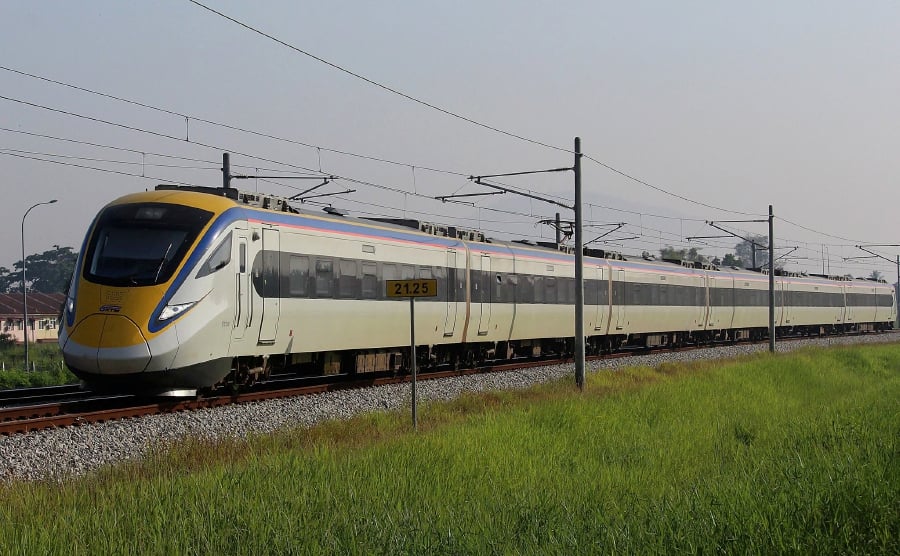
(File pix) From June 1, GST would be zero-rated. This news was received with much optimism in the market. Archive image for illustration purposes only. Pix by Aizuddin Saad
THE euphoria of the spectacular 14th General Election results may have gone down a couple of notches for Malaysians by now. The excitement is still in the air though.
Everywhere we go, the conversation is generally centred on the GE14 and its unexpected result.
All eyes are on the man of the hour: Tun Dr Mahathir Mohamed. The nation watches him with bated breath as he gets down to business. There is much anticipation in the air. A new hope has dawned on Malaysia.
As the house-cleaning gets underway, the average man on the street is amazed at how much has been uncovered in just a matter of days. As more time goes by, there is no doubt in everyone’s mind that more shenanigans will be uncovered.
Among all the promises made by Pakatan Harapan in their manifesto, the most highly anticipated one must be the abolishment of Goods and Services Tax (GST). When Dr Mahathir made the announcement soon after taking office, the whole nation applauded.
But, how does this affect the property market?
MAKING THE ANNOUNCEMENT
Having made the announcement but without any details or explanations would actually have spelt serious trouble for the property market. Investors expect the GST to be abolished, but do not know when that would happen. So, what they would do is to halt any property purchase until things become clearer.
Actually, they would halt all other sizeable purchases, too. Why would anyone pay GST if in the foreseeable short term, they would not have to. So, all they have to do is defer their purchase until the plan is finalised.
SETTING A TIMELINE
Luckily for all of us, the new team in charge has displayed far-sighted thinking. Within days of announcing the GST abolishment plan, they put a firm and definite timeline to the exercise. From June 1, GST would be zero-rated. In essence, you would have to pay nothing in tax.
RECEIVING THE NEWS
This news was received with much optimism in the market. Although I personally would have voted against the abolishment of the GST, the majority of Malaysians obviously did not agree with me.
What was expected to happen? Well, many people felt that the price of goods and services would miraculously fall immediately.
I do not think this would happen.
I have found, from many years of observation, prices of goods and services in Malaysia move only in one direction — upwards.
COMMERCIAL AND INDUSTRIAL PROPERTIES
The sector of the property market affected by GST is the non-residential sector.
Residential purchases are exempted from paying this tax.
What this essentially means in absolute numbers is: For example, you purchase a shop-office for RM1 million. Your purchase will automatically attract GST, which is currently at 6 per cent. This means that on top of the RM1 million, you will need to pay a further RM60,000 in tax. This is indeed a heavy burden for the average investor.
In a soft market currently, some purchasers would disagree with paying this amount. If the vendor was desperate enough, or was keen on a quick sale, they may just volunteer to pay the RM60,000 on the purchaser’s behalf. If that happens, the price of the property has actually gone down to RM940,000.
Either way, both parties lose, and hence the anger against this tax from the public.
WHAT HAPPENS NOW
Luckily for the property market the government has announced a definite timeline for the GST abolishment. June 1 is merely two weeks away from the day the announcement was made. In the world of property investments, two weeks is insignificant.
So, there is no danger that deals that are currently underway would run the risk of stalling. At most, some people may have waited two weeks to complete the sale or sign the agreements.
GOOD NEWS FOR THE MARKET
The abolishment of the GST would have a positive effect on the property market.
Absolute prices of non-residential properties would go down immediately with no tax to be paid. Prices of residential properties are also expected to reduce in time, with tax on various components of building materials being abolished as well.
Let’s hope that this is indeed a new tomorrow for Malaysia. I look forward to the property market finally moving into positive territory after so many years in the dark side. I can already feel the enthusiasm in the air and am confident that the upward climb will be able to be felt really soon.
Until then, happy hunting and may the force be with you.
========================================================================
Siva Shanker is a real estate practitioner who tries to manage the labyrinth of the property market honestly while consistently maintains a high standard of ethics in his practice. He welcomes feedback via siva@ miea.com.my

